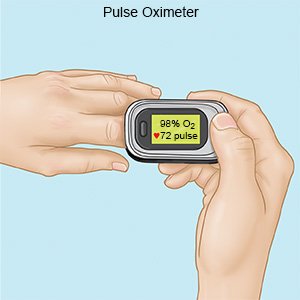Simple Eosinophilic Pneumonia
Medically reviewed by Drugs.com. Last updated on Aug 4, 2025.
Simple eosinophilic pneumonia (SEP) is caused by lung inflammation. Eosinophils are white blood cells that help your body fight disease such as a parasite infection. The eosinophils collect in your lungs and irritate your lung tissues. This makes your lungs inflamed and swollen. SEP is also called Loffler syndrome or pulmonary eosinophilia.
 |
WHILE YOU ARE HERE:
Informed consent
is a legal document that explains the tests, treatments, or procedures that you may need. Informed consent means you understand what will be done and can make decisions about what you want. You give your permission when you sign the consent form. You can have someone sign this form for you if you are not able to sign it. You have the right to understand your medical care in words you know. Before you sign the consent form, understand the risks and benefits of what will be done. Make sure all your questions are answered.
An IV
is a small tube placed in your vein that is used to give you medicine or liquids.
Medicines:
- Steroids may be given to decrease lung inflammation.
- Antiparasitics may be given to help kill parasites if they caused your pneumonia.
- Acetaminophen and ibuprofen decrease fever and pain.
Tests:
- Blood tests may be used to find the cause of your symptoms.
- A chest x-ray or CT scan may show signs of infection. You may be given contrast liquid before the scan. Tell the healthcare provider if you have ever had an allergic reaction to contrast liquid.
- Pulse oximetry measures the amount of oxygen in your blood.

- A mucus sample may be tested to find the cause of your symptoms.
- A bronchoscopy is a procedure to look inside your airway and find the cause of your pneumonia. A bronchoscope (thin tube with a light) is inserted into your mouth and moved down your throat to your airway. You may be given medicine to numb your throat and help you relax during the procedure. Tissue and fluid may be collected from your airway or lungs to be tested.
Treatment:
- Airway clearance techniques are exercises to help remove mucus so you can breathe more easily. Your healthcare provider will show you how to do the exercises. These exercises may be used along with machines or devices to help decrease your symptoms.
- Respiratory support is given to help you breathe. You may receive oxygen to increase the level of oxygen in your blood. You may also need a machine to help you breathe.
RISKS:
Simple eosinophilic pneumonia increases your risk for breathing problems. Extra fluid may collect in the space around your lungs. You may not be able to get enough oxygen if your lungs are inflamed or damaged. Low oxygen levels can damage other organs, such as your kidneys, heart, and brain.
CARE AGREEMENT:
You have the right to help plan your care. Learn about your health condition and how it may be treated. Discuss treatment options with your healthcare providers to decide what care you want to receive. You always have the right to refuse treatment.© Copyright Merative 2025 Information is for End User's use only and may not be sold, redistributed or otherwise used for commercial purposes.
The above information is an educational aid only. It is not intended as medical advice for individual conditions or treatments. Talk to your doctor, nurse or pharmacist before following any medical regimen to see if it is safe and effective for you.
Learn more about Simple Eosinophilic Pneumonia
Treatment options
Care guides
Further information
Always consult your healthcare provider to ensure the information displayed on this page applies to your personal circumstances.
